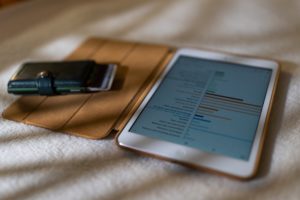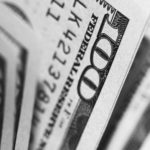Whether you are swiping a card, inserting the chip into the reader, or just hovering your phone over a scanner so it can magically take money from your bank account, it is pretty safe to say that writing a check is definitely “old school.” The Federal Reserve published a study showing the steady decline of check-writing over the last 20 years. Even with this mass check-writing exodus, Americans still need to write them on occasion. The same study showed a substantial increase in the average dollar amount per check written over the same period of time. So for larger expenses, a check seems to still have usefulness. For those that don’t know anything about check writing, you may notice a bunch of numbers at the bottom of the check. That is your account number and routing number, and they mean more than you may imagine!
The Importance of Account Numbers
The world uses numbers to identify everyone. Numbers are a way of keeping up with people, money, cases, and even speeding tickets! Perhaps most importantly, account numbers are attributed to our money through the banking system. Banks have to have a fast way to credit and debit certain individuals and businesses. Account numbers allow for this to happen correctly at lightning speed. Imagine how hard it would be if your name was John Smith and we didn’t use account numbers. It would be awfully hard to figure out which John Smith should be charged. Amelia Josephson with Smart Asset says that the following may be some reasons you would need the account number on your check.
- You need to establish a direct deposit for your paycheck
- Someone needs to put money in your account
- You are authorizing an automatic draft to your account
Checks are printed with your customized information including your name, address, telephone, and other important information. Most importantly, the check also has your account information printed at the bottom. The account number is printed in different spots along the bottom depending upon your bank, and each bank may have a different amount of numbers included for their accounts. Because this information is personal to you and your money, keep your checkbook in a secure location. In a world full of identity thieves, you don’t want to tempt them. Checks are one of the easiest ways to steal a person’s identity, so be cautious.
What Are the Other Numbers?
You might notice a bunch of other numbers also written along the bottom of the check. Those aren’t just for decoration. The string of nine digits is called the “routing number,” and it identifies your bank. Because there are so many people with accounts (some have several accounts individually), the account numbers are unique to each specific bank. To identify which bank an account number applies to, we use the nine-digit routing number. For most of the reasons you might need to give your account number, you would also need to provide the nine-digit routing number. The routing number itself doesn’t have anything to do with your individual account but allows banks to send money from one to another. Some people memorize their bank account numbers, but few people memorize their bank routing number. You won’t need to bother with it unless it is requested.
The Check Number
Each check has its own unique number as well that is printed (often on the top left, or bottom right corner.) This is for your own bookkeeping as well as the bookkeeping of the bank. If you need to reference a specific check you wrote, the number provides a way to quickly get to the right check. Check numbers are also helpful when it comes to identifying identity thieves. If you aren’t sure about a debit from your account, you can’t access the check number and then either in person or online, look at the check itself. With the power of the internet, seeing a check in your online banking account system is very fast and easy. It’s an easy and straightforward way to identify a fraudulent check.
The Bottom Line
At the end of the day, the world has moved into a digital revolution. Paperless transactions are more commonplace now and checks are far rarer. But knowing how they work and understanding the importance of safeguarding them to avoid identity theft is still highly important. Checks are still a spendable currency, and everyone should learn how to write them. Recognizing the account number, routing number and check number, as well as understanding their uses is important for anyone that uses a bank. So while you may plan to go on using your card and hovering your phone over the magic scanner, you are better prepared for how to find this useful information at a glance just by looking at things like the account number on your check.






